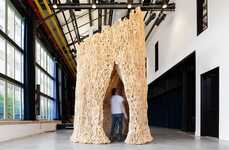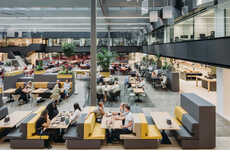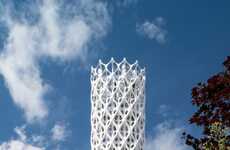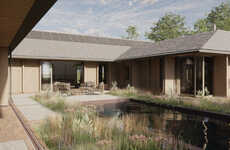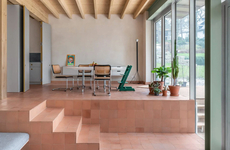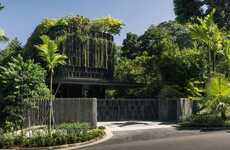
Splitterwerk's Algae-Powered Building is Truly Green in its Design
Laura McQuarrie — April 15, 2013 — Eco
References: iba-hamburg.de & designboom
The construction of the algae-powered BIQ House in Hamburg, Germany has been completed. It would be hard not to take notice of this new and entirely green building, with its two sides painted in the vibrant hue, and the other two covered in glass panels filled with locally sourced algae.
The innovative and sustainable design by Splitterwerk relies on photosynthesis to supply heat to the building. The ever-changing, living facades thrive in the sunlight, producing five times the biomass as compared to a terrestrial plant wall. Any surplus of the clean and renewable energy generated can be stored and reserved for use in Hamburg's cold winter months, or sold back to the grid. As the first of its kind, the algae-fueled building was revealed at the International Building Exhibiton, and is being tested as a model for use in other climates.
Photo Credits: designboom, iba-hamburg.de
The innovative and sustainable design by Splitterwerk relies on photosynthesis to supply heat to the building. The ever-changing, living facades thrive in the sunlight, producing five times the biomass as compared to a terrestrial plant wall. Any surplus of the clean and renewable energy generated can be stored and reserved for use in Hamburg's cold winter months, or sold back to the grid. As the first of its kind, the algae-fueled building was revealed at the International Building Exhibiton, and is being tested as a model for use in other climates.
Photo Credits: designboom, iba-hamburg.de
Trend Themes
1. Algae-powered Buildings - The construction of algae-powered buildings presents a disruptive innovation opportunity for sustainable and renewable architecture.
2. Living Facades - The utilization of living facades, such as those filled with locally sourced algae, presents a disruptive innovation opportunity for eco-friendly building designs.
3. Renewable Energy Storage - The development of efficient storage systems for surplus renewable energy in algae-powered buildings presents a disruptive innovation opportunity for sustainable energy management.
Industry Implications
1. Architecture - The construction industry can explore the use of algae-powered buildings to create sustainable and energy-efficient structures.
2. Renewable Energy - The renewable energy sector can benefit from the development of algae-powered buildings as a way to generate and store clean energy.
3. Environmental Technology - The environmental technology industry can leverage the use of living facades, like algae-filled glass panels, to create eco-friendly building solutions.
4.5
Score
Popularity
Activity
Freshness


